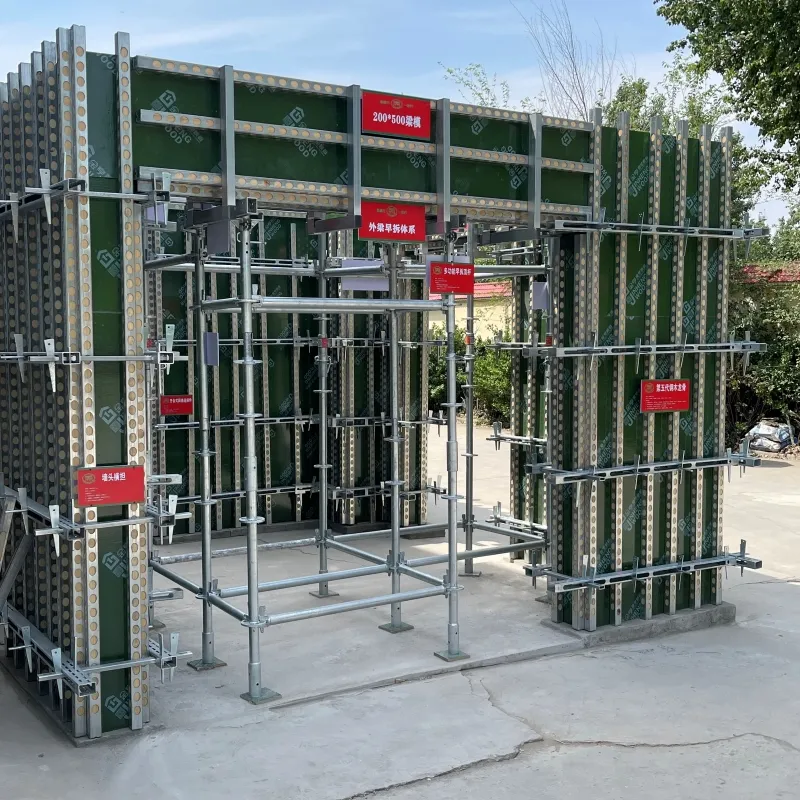
Th2 . 19, 2025 06:37
Back to list
aluminium scaffolding for sale
Scaffolding is critical in construction, providing workers with safe access to elevated structures. A key component in ensuring scaffolding stability and effectiveness is the coupler. Couplers join various scaffold components, making understanding their types and applications vital for optimal scaffolding configurations. Here's an in-depth exploration of the different types of couplers used in scaffolding.
Gravlock Couplers Gravlock or Girder couplers are crucial when scaffolding needs to connect to an I-beam or similar girder system. The unique design of gravlock couplers allows them to affix scaffolding tubes directly onto girders securely. This is particularly valuable in industrial or high-rise settings, where scaffolding ties into existing steel structures, enhancing stability and load-bearing capacity. Beam Couplers Beam couplers merit attention in scenarios requiring the bridging of larger gaps or when the scaffolding framework incorporates steel beams. They attach scaffold tubes to steel beams, providing a dependable connection that supports significant loads. Beam couplers are commonly utilized in heavy-duty construction projects where scaffolding interfaces with robust structural elements. Parallel Couplers Parallel couplers are used to connect scaffold tubes side-by-side, providing support without the angular restrictions found in right-angle or swivel couplers. This capability is vital when creating parallel horizontal rails or bracing systems that enhance the structural stability of scaffolding. Choosing the appropriate coupler type is contingent on understanding the specific demands and configurations of a scaffolding project. Proper selection enhances safety, stability, and functionality, underscoring the importance of aligning the coupler choice with the project's unique engineering requirements. In conclusion, while couplers might seem like minor components in the grand scope of scaffolding, their role is undeniably significant. Knowing the distinct types and their applications not only optimizes scaffolding performance but also contributes to a safer environment for construction workers. With advancements in materials and engineering, the evolution of scaffolding couplers continues to support the ever-growing complexity of modern architecture and construction demands.


Gravlock Couplers Gravlock or Girder couplers are crucial when scaffolding needs to connect to an I-beam or similar girder system. The unique design of gravlock couplers allows them to affix scaffolding tubes directly onto girders securely. This is particularly valuable in industrial or high-rise settings, where scaffolding ties into existing steel structures, enhancing stability and load-bearing capacity. Beam Couplers Beam couplers merit attention in scenarios requiring the bridging of larger gaps or when the scaffolding framework incorporates steel beams. They attach scaffold tubes to steel beams, providing a dependable connection that supports significant loads. Beam couplers are commonly utilized in heavy-duty construction projects where scaffolding interfaces with robust structural elements. Parallel Couplers Parallel couplers are used to connect scaffold tubes side-by-side, providing support without the angular restrictions found in right-angle or swivel couplers. This capability is vital when creating parallel horizontal rails or bracing systems that enhance the structural stability of scaffolding. Choosing the appropriate coupler type is contingent on understanding the specific demands and configurations of a scaffolding project. Proper selection enhances safety, stability, and functionality, underscoring the importance of aligning the coupler choice with the project's unique engineering requirements. In conclusion, while couplers might seem like minor components in the grand scope of scaffolding, their role is undeniably significant. Knowing the distinct types and their applications not only optimizes scaffolding performance but also contributes to a safer environment for construction workers. With advancements in materials and engineering, the evolution of scaffolding couplers continues to support the ever-growing complexity of modern architecture and construction demands.
Share
Latest news
-
The Importance of Reinforcement Bar in ConstructionNewsJul.11,2025
-
The Durability of Timber Steel FurnitureNewsJul.11,2025
-
How to Assemble Fixed Clamp Scaffolding SafelyNewsJul.11,2025
-
Essential Column Rebar Specifications for High-Rise BuildingsNewsJul.11,2025
-
Common Applications of Steel Keels in ConstructionNewsJul.11,2025
-
Benefits of Using Aluminum Scaffolding Ladders Over SteelNewsJul.11,2025
-
Stainless Steel Keel: Analysis of the Triple Advantages of Rigidity, Stability, and LightweightNewsJun.19,2025
Related Products









